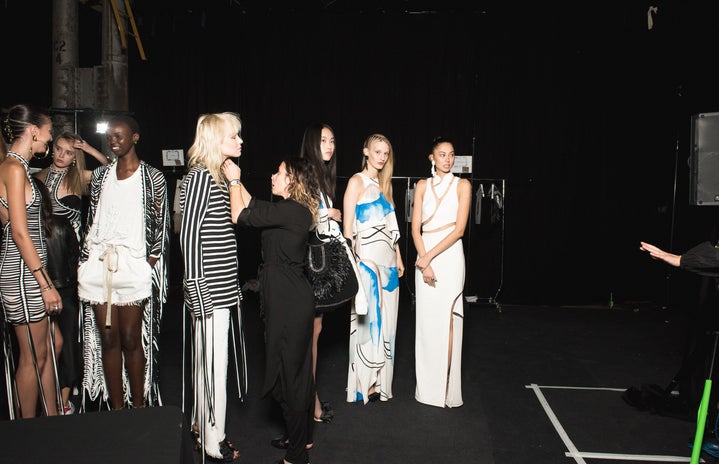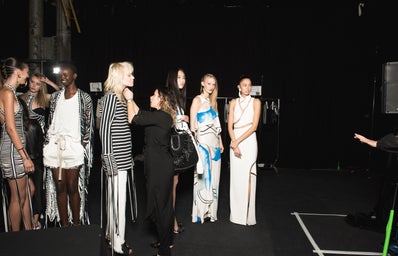Staying fashionable is at the top of many people’s minds, and the same goes for sustainability. The biggest thing now seems to be how to stay fashionable while being sustainable. Trends come and go at record speeds nowadays, and it’s natural to want to stay on top of them. Not only are trends happening rather quickly, but they are all wildly different from one another. Within the same week, green zebra print flared pants and straight-legged brown leather pants could be trending.
If you want to stay fashionable without shopping fast fashion, continue on!
- Thrifting
-
This is the one that everybody expected, I know, but thrifting is at the heart of staying sustainable with fashion if you need new items. I am going to add a caveat and say that thrifting is not equal in all places. Many thrift stores carry mainly straight-sized items and the plus-sized items they do have are taken by straight-sized people to alter. With this, if you are a straight-sized person, avoid taking items from the plus-sized sections of thrift stores. It’s one thing to shop a few sizes above your “actual” size for an oversized item, but it’s another to take plus-sized items away from people who want to thrift as well.
My main tip for thrift shopping is to not have any expectations when you go into the store. If you walk in wanting to find a specific item, you’re likely to be disappointed. What I like to do is make a Pinterest board filled with items I like the general aesthetic of. Then, when I go thrifting, I can look for things that fit that look, while avoiding overconsuming and buying every item I like. Additionally, when I find something I like, I think of outfits I would wear the item with. If I can’t think of at least one off the top of my head, I usually don’t make the purchase.
My last thing with thrifting is that overconsumption is still overconsumption. If you go to the thrift store and buy every item you like just because it is less expensive than retail stores, you are not being sustainable. The overall goal of sustainability is to limit your consumption and to be conscious of what you do consume.
- Buy Small and Sustainable
-
Next is the other new item option. Thrifting doesn’t work for many people because of time, sizing or a lack of items in their style available. When I can’t thrift, I try to buy from small and local businesses, like many of the boutiques on Pearl Street. This is a more expensive option than thrifting by far at most places, but most of the items you will find are very well made and will last a long time. I think about this by comparing all the things I’ve bought at the mall, like jeans at American Eagle, that only lasted me a few years and were $40-$50. If I’m at a smaller store that’s higher quality, jeans may be $100, but they are likely to last much longer than the American Eagle jeans.
With this, online secondhand retailers like Depop and Ebay fall into this category as well. These are great if you are looking for a specific designer, item or price range. There are so many options that are easy to browse if you don’t have the time to sift through physical racks at the thrift store. I love Depop when I’m hunting for a specific item, like the amazing Cop Copine frog print mesh top, which I still have not found. >:(
- Clothing Swaps
-
I love this one! Set up a clothing swap with your friends where you clean out your closets and dig out everything you haven’t worn in a year or two, or that you didn’t like when you did wear it. This is a great way to change up your style or get some new clothes for free. With this, you can get some of your new favorite pieces and clean out your closet at the same time. Additionally, it can be really cool to see your friends wearing your old clothes, and sometimes they’ll wear them in ways you didn’t think about.
You can account for sizing differences with belts, minor alterations, cropping/cutting of shirts and wearing things in an oversized style. Additionally, if there are large size differences, shirts can become dresses, pants can become shorts, and t-shirts can be cut into tank tops. This is where I fully encourage you to regress into your middle school years and look up YouTube tutorials for everything.
- Embroidering, Sewing, Dying
-
This one is for current pieces of clothing and can be super fun. I learned to embroider at the beginning of the pandemic, and it has been my favorite addition to clothing. I have jazzed up jeans that I didn’t wear much with flowers, snails, lines, dots and many other things. I have turned white tank tops into statement pieces and added a lot of variety to my wardrobe.
When you buy embroidered items, they’re usually more expensive than other clothing because of how much effort can be put into some embroidery, but the hoops, thread and needles are about $10-$15. If you’re in the Boulder area, I recommend you go to Art Parts for these things. Art Parts is a second-hand art store that has so many cool things, and a large discount on all art supplies.
I don’t know sewing quite as much. I can mend holes and sew buttons on, but not much more. These minor repairs to clothing can help a lot, though. I had a few shirts I didn’t wear much anymore because of holes or stains. Sewing over these or dying the item made me wear it much more often. I particularly like dying of clothing because colors can be particularly finicky for trends. If you don’t like your mustard yellow attire from a few years back, or just want to mix it up, you can dye those items to be any color you want, knowing that black is always a safe bet!
- Don’t Throw Out
-
You’re at the last tip, yay! This is usually the last resort for clothing. If you have something you really don’t like and none of your friends want it, you have a few options. The easiest one is to donate the clothing to a homeless shelter or thrift store. This is one that many people already know about and consider, but I like donating clothes directly to homeless shelters more than thrift stores, especially when the items are heavier winter items.
Additionally, when I’m ready to get rid of t-shirts, I cut out the parts without screen printing for hand and tea towels in the kitchen. I’m hoping to eventually not need paper towels because of this, but I’m not quite there yet. With the other pieces that are screen printed, some people keep them to be stuffed into pillows, but I usually just throw those scraps out.
Being sustainable shouldn’t mean that fashion is out the window, and with these tips, it doesn’t have to be. There’s a lot of options to keep up with the trends and maybe even start your own!



